A 20 minute short film with 2.7M views!? In this interview with visual effects artist, Jesse Boots: hear the motivation behind Project Arbiter, what it’s like working with Silicon Valley’s elites and a frank discussion on Hollywood and the recent implications to the visual effects industry.
Related Links
Welcome
Adrian Thompson: I’m here with Jesse Boots, a very talented filmmaker who’s balancing a career in corporate video with companies like Apple, Yahoo and Google as well as a portfolio of incredible short films, one of which has over 2.7M views on YouTube. Jesse, thank you so much for coming on the show
Jesse Boots: Yeah! Thanks for having me Adrian, it’s great to be here.
Adrian: You’ve been working on some really cool stuff, but before we get into that, I’d love to hear, just really briefly, how you got started with short films and visual effects.
Jesse: Yeah, I mean, like a lot of aspiring filmmakers: started when I was much younger, in my teens, but in terms of getting into some of the more serious short films, I went to college at De Anza Community College, had a lot of friends there that I networked and collaborated with. Making short films obviously in community college allows you to meet a lot of different people and a lot of those relationships carried on after I had left college, specifically with one of my good friends, Michael Chance. We endeavored to make the short film you just referenced, Project Arbiter, a kind of sci-fi World War II film. It kind of just spiraled from going to community college, connecting with friends, staying together and forming a tight knit group.
Balancing Corporate Work and Pursuing Your Creative Passion
Adrian: Before we were recording you mentioned having a passion for directing and you like creating your own short films as well, but you’re also a very well established visual effects artist. How have you balanced those two things: working on, as a visual effects artist, but also still thinking about and pursuing your projects?
Jesse: It’s tough because I think a lot of people that want to get in the filmmaking industry aspire to be a director, or a producer or a writer. I’m no different than them and a lot of my friends are the same, but as we get older, we evolve, and depending what success we’re finding I think a lot of people start to navigate to different parts of the industry whether that be post production, pre-production, or different roles within physical production or live action production.
Even though I was always an aspiring filmmaker and wanting to direct, write and produce films, as generic as it sounds, “be a storyteller”. Right out of college, when I transferred from De Anza Community College to San Francisco State, I got an opportunity to do an internship at a visual effects kind of post production boutique house called NTROPIC, based out of San Francisco, California. As I was splitting time between this visual effects house and S.F. State, it came to a point that I had to choose one or the other and I actually decided to step away from San Francisco State; I dropped out and went all-in with this visual effects boutique house. I thought it allotted me a lot of opportunities to learn, not just about post production, but about being in a professional environment, also, you need to make a living, so trying to make a little bit of money.
Then from there, I kind of fell into post production and building that skillset up, particularly with editorial, visual effects, specifically with finishing, conforming and compositing. So, that’s how I kind of transitioned from being an aspiring filmmaker to now actually doing something in practice with filmmaking but in the post production side.
The Secret to Success in Making Short Films
Adrian: You’ve worked on some really awesome short films, like Whipping Boy and Project Arbiter, I think I would describe Whipping Boy as being a futuristic setting in San Francisco, I believe, or was that a specific city?
Jesse: Yeah, I think it’s kind of a dystopian, future city.
Adrian: And Project Arbiter was set in WW2 with futuristic weapons, or high tech classified weapons. Picture somebody who is looking at these projects and wondering, “How could I get to a place of working on that level of film?”
Jesse: Not to deter people’s pursuits of trying to do films like this, and the undertaking that follows, but it’s kind of a perfect storm of a lot of things. But, starting with Arbiter: Michael Chance, who’s the director and creator of that project, and I was a producer and Visual Effects Supervisor, we’ve known each other for a long time and it was in development for a long time.
By me working at this visual effects company, not just working there, but being fortunate enough to have access to the software and these tools to be able to use on my personal projects, was key. Having that support from my work to pursue personal projects in off time, on weekends, at night, and in the early morning and on lunches, was crucial. Not to say that you have to have someone who works at one of these types of companies or has this type of skillset, it definitely helps. I do feel it’s become slightly easier, even though software can still be kind of pricey, I think just the access to it and the access to learning how to use it is becoming so saturated online that I think it would be much easier to do that type of film today. Whereas before, me and Mike would be commuting to the office on the weekends, every weekend, or staying late at night; you can do a lot of it at home.
I think though it starts with being genuine and excited, and finding something that is exciting to people for this project, and in this case it was, where people will want to help and want to contribute and see the potential of what it can be and it takes a lot of sacrifice and support, but I feel that with the tools that are available now, it’s much easier to make these types of films in your backyard.
Adrian: You mention going to the offices late at night and you guys are both working full-time jobs, the director, and you guys are choosing to go work on this several nights a week; you’re investing a lot of hours into it. I’m curious to hear: what’s driving you to just take this [project] to that level? Even when you must be tired, you must want to just go to sleep. There’s something that you guys are envisioning that’s taking you to that place, where you can find that energy to do that. How would you describe where that’s coming from and what you’re shooting for when you’re doing that?
Jesse: If you were to ask me that question back then, when I was in it, I would probably have a different answer, but upon having some time away and being able to have time to reflect and articulate it in a clearer way. I think what it comes down to is: when you think about aspiring filmmaking and trying to make movies and break into an industry and find the proper delivery for the content you’re creating: you want to tell a story, takes the audience somewhere, shows them something new, it’s easy to get excited about that, and passionate about it. But I think what happens a lot, is people can get really excited about ideas and projects they shoot and there’s that common phrase, “Short films die in post production” because it can become a drawn out process, especially with visual effects, you can easily get overwhelmed and burdened.
I think with a lot of people, specifically with friends or those casual acquaintances, or other people, they think it’s kind of a hobby. Right? And when something’s a hobby, you play a little bit looser in terms of your urgency and your commitment. I think you have to reframe your perception that this is work. And as fun as it is to create these things, you have to treat it as work, and sometimes as fun as it is to create movies, it’s going to get a little bit grueling, it’s going to get tiring—it’s not going to be fun, but when you can treat it and perceive it like it’s going to be another job, or like work, and you can start to put schedules and deadlines and be accountable in a way… I think that definitely helps get things done.
You know, on top of what I just feel, maybe comes naturally to some of the people that I’ve worked with, is having the shear will. You know what I mean? You just want it. This is what you want to do and you got to put that time in and that sacrifice. It definitely helps to have a great support system, I mean a lot of people, especially as we’ve gotten older; you get married or you have families and you have other things that start to take up your time, probably things that I would say are more important as well. But, it still comes down to: hopefully you’re with a person or surrounded by people who do support it, and you have to know that you’re going to make some sacrifices and be okay with that.
Adrian: Totally. I like what you said about some people viewing it as a hobby, but that you guys can’t afford to take that mindset, because what you guys are doing, is trying to reach for the highest level possible. What I find impressive about Project Arbiter having 2.7M views, which I think is a real testament to the amount of work you’ve put in, because there’s a lot of viral videos might around that get that kind of views, but it might be a cat on a piano or something, right? But creating this type of work, to get people to share, is such a different level of creative energy. Like, crafting a story and creating such a high production value, it’s being shared for an entirely different reason. It’s because people were drawn into this environment and they actually really enjoyed it for I would say a deeper purpose, rather than just some funny value. To create that just takes so much work, and like you said, people that might be doing it for a hobby… there’s such a fine line between cliche or cheesy movies, because they just don’t have that attention to detail and it’s not well planned out and it just doesn’t communicate well.
It just shows in the work that you’re producing: you know what makes a high production value movie and that’s what you want to create because you want to capture people’s attention and actually have them watch it.
Jesse: Yeah, and not to put the film on too high of a pedestal myself, but one thing that I also was very encouraged in: this isn’t a cat video, or some viral video that’s only a minute long. This is a 15-20 minute short film, you know what I mean? To carry people’s attention, whether they’re watching it all or not, I mean you hope everyone’s watching the entire thing, but the fact that you could get that many hits on something that is that long is very encouraging, because I feel that people do watch it because if they didn’t it wouldn’t get that many hits, because it wouldn’t be passed around or recommended as much.
Wrestling with the Review Process
Adrian: Can you think of a moment during a time of these short films that was particularly challenging where you guys are just down in the ditches and it’s a difficult situation you had to walk through?
Jesse: With Project Arbiter we had a lot of visuals effects that you’ll see in the film and some that you may not even see, you know, that are hidden. When you have that many visual effects and you’re as ambitious as we were—you’re working a lot of weekends, you’re working a lot of nights—you kind of have to start setting boundaries, or at least I did. Where I said, “Okay, Mike, listen, honestly we need to limit it to this amount of shots for this sequence,” or, “Once we choose this angle, for a shot, we kind of have to stick with it, because I can’t keep going back and trying new things with the artist,” because we were starting to get, not burnt out, but we were getting to the end of the line, the end of the project, and we just needed to wrap it up.
There was this one specific shot, me and Mike and Vicki de Mey, who was a producer on the project, were at NTROPIC on a weekend and we were doing all these plane visual effects shots as it blows up this tank and we had chosen an angle, and Mike and wanted to change it. I was kind of at the end of my rope and I kind of snapped at him a little bit, unfortunately, and was just like, “We talked about this, we can only do this angle, we can’t switch it anymore!” You know? “We have to be it”. It was a trying time, because I think on film, and in life in general, depending on the people, there’s going to be times of conflict or heated exchange, where you don’t see eye to eye. I think what that project allowed us to do, specifically in this moment, it was a time of tension between Mike for a quick moment there, and then we both kind of shut down for a second, but then immediately, within the same day, we come back together and we talk about it and we try to find a solution or compromise to make sure that we’re not settling for anything.
You can get on these projects where their so ambitious and so big, but in this small moment, I tend to think of myself as a calm steady presence, you know, I snapped. You know what I mean? I snapped on someone and sometimes that happens, but you have to come back together and try to figure out and work through the issue. Communication was key on that one.
In terms of one that kind of went a little south real fast is on Whipping Boy, we had this 3D heart that was being projected from some type of futuristic television device or what not. Me and Mike were struggling to figure out what it look like and we had had another artist give a go, and he didn’t really want to finish it, he was just kind of messing around, but it helped give us some inspiration. So we’re sitting in the small corner of a room, on this computer, huddled next to each other and Mike is trying to direct and give me direction on what he wants to see, but then sometimes he also doesn’t know what he wants to see and we’re just trying to brainstorm. And I’m trying to think of it, and we’re both just hitting a wall, creatively, of like, what to do. Then I just start messing around real quick on this heart thing and layering things a different way and trying different things, and he said, “You know, this is starting to look right, I think the problem is: I just need to let you work and I’ll come back when you’re ready.” It’s because we thought it would be great if he was just sitting next to me the whole time, you know what I mean? We were just trying to figure it out very granular and detailed, but it actually didn’t work well that way because what needed to happen, is sometimes, I think, you have to fail a lot. You have to experiment and every time I would try to experiment, it would initially be like, “Oh no, that’s not right,” but sometimes you needed to take things further to find out whether it will be right or not, and in that moment it taught me that as much as it’s great to sometimes work next to someone, and that can be successful in figuring certain things out, sometimes you both just need to step away and form separate ideas and then come back together.
Adrian: Yeah, sometimes in this type of creative work, you do just have to spend a few hours failing and trying things that are embarrassing to look at it. Like, you’re always nervous when somebody’s going to come look over your shoulder and say, “What are you doing? That looks terrible!”
Jesse: Right.
Adrian: Well yeah, that’s just what it takes to get to the finished product.
Jesse: And then you feel like you’ve lost all this momentum and what not, but it happens a lot. A lot of it is experimenting, especially with things; you’re taking inspiration from other forms of art, or movies, but it’s never going to be exactly like that, even if you wanted it to just because you’re not that person who created it.
Adrian: Put it in perspective for the listeners, do you remember how long it took from start to finish to get Project Arbiter to this place?
Jesse: I don’t know how long the pre-production process was, in terms of the ideation of who these characters are, or what the story is or what not. I do remember several small conversations with Mike about it. Him talking about this guy in an invisible suit, and me talking about, “I want to do this little WW2 thing with the tank coming over the hill,” completely separate ideas that were never necessarily merged. And Mike’s like, “Well, why don’t you do this visual effects thing with the tank and you just throw it in this short film thing that I’m doing?” or something. But I think he had went and developed with the concept artist who had helped design the suit and we came back, but, you know, that could’ve been a year, could’ve been 2 years. It was probably at least 2 years. In terms of the actual shooting we shot in 2010, and we shot in Petaluma, CA and I think it was a 9 day shoot, 7 days on location, 2 days in studio. In terms of post production we went right into it a couple weeks after. I definitely finished my portion of the film, in terms of visual effects supervising and helping produce, and actually doing a lot of the shots myself, in the 2012 timeframe. So probably took about 2 years of nights and weekend. In terms of the majority of the work, I’d say it was definitely a 2 year process for this film.
Creative Differences Between Corporate Video & Filmmaking
Adrian: Switching topics. We said in the beginning you’re also working with Apple, Yahoo and Google and recently you worked on the Apple Watch Series 2 video, which is awesome. I think everybody has seen that, almost, that would be listening to this show. What is it like working in that type of corporate environment in contrast to working on all these cinematic visual effects?
Jesse: It’s definitely been a great balance in terms of going back to some of the questions you were asking earlier, in terms of, “How do you balance working a day job and then pursuing these creative endeavors outside of that?” The great thing about how the corporate environment has helped, and specifically with Apple and Google and these types of places, is that you can kind of go in there and there is opportunities to be creative and then there’s opportunities to execute on a technical level. There’s always some level of creativity infused in a project, right? Whether it’s creative in terms of the story or the editorial approach in terms of technique or helping flesh out ideas, but then there’s also just technical executions of things, that yes, they’re creative but they feel a little bit more automatic in terms of, you just have to put these pieces together in a way, that is still captivating, but it doesn’t I guess draw on the same energy at least for me mentally, of where I’m pulling from for the side projects creatively. This industry, I think across the board: post production, production and pre-production, and whether you’re in film, commercial or corporate; tends to have longer hours, but I think there’s a good balance with the corporate work. Specifically that you have peaks and valley’s, so it scales up to get really busy and challenging in terms of time and hours and then it kind of goes down.
Adrian: I’m curious to hear what you have to think about the differences in collaboration. I mean, there’s so much creative collaboration with short film creation and I wonder if you think, or what your perspective is, on these type of large corporate projects. What’s your experience and what’s different about that type of collaboration, more specifically, that you notice with all these people involved?
Jesse: There’s definitely a lot more people involved and I think there’s a lot more stakes. Whereas with a short film, at least in my experience, and definitely recently, you’re coming in as someone that I think is a little more pivotal to the process: you know, a producer, a writer, a director, so you might have a little bit more say, and influence in terms of how the film is shaped. In terms of some of the corporate work, I don’t want to say I’m a cog in the wheel, but I’m just one aspect of a huge team of people that are working. It’s not that I’m, that my voice is not heard or what not, it’s just that there’s a lot more voices and a lot more departments and individuals that these products affect, and so you’re having to work with a lot of different teams and work across different department’s. You know, if I’m doing something like an ad, I have to make sure that there’s sometime of symmetry in terms of the branding or messaging with web and with event stuff. There has to be a cohesion, whether it’s for a product, or whatever it’s for, across the board. I think that’s the fundamental difference, it’s that you’re an important part, but you’re a much smaller part in terms of your overall impact.
Status of Hollywood and the Visual Effects Industry
Adrian: There’s been a lot happening in terms of visual effects and Hollywood, specifically with Rhythm and Hues going out of business after winning an Oscar for ‘Life of Pi’ which was kind of a dramatic thing that I saw even on Facebook, there was a big movement that was just trying to draw attention to that. I’m curious to hear what you think about the state of that and do you think anything is improving, or do you think that the visual effects industry is kind of in a weird spot overall?
Jesse: I definitely think it’s in a weird spot. I think the one thing I do appreciate about, you know, as I came up and was an aspiring filmmaker and still trying to make films today is: by being able to work at a visual effects boutique house and getting that kind of exposure to that world and what artists and companies go through definitely makes you a little bit more aware and sensitive to how they’re treated and how much they do in terms of work for usually a lot less money. I really cherish that as a director I can understand that and appreciate the amount of work that goes into a lot of these films. Because a lot of people, you know, you go and make a move and I’m just gonna call it “Big Blockbuster a” these visual effects artists pour in blood sweat and tears and hours upon hours of work and you know these films can be dismissed very easily, which is unfortunate because even though from a narrative standpoint it definitely should want the best, but that doesn’t discredit all the work going into it. Circling back to the state of the industry, it’s in a weird place because I think with a lot of production, you spend a lot of your money on the things that come first. And what comes first? Pre-production, then production and then by the time you get to post production, I generally find that the amount of money left over, specifically for visual effects, because there’s many aspects of post production, I feel that visual effects tends to get the short end of the stick. You see that reflected in how the industry has shifted and changed and moved, you know? To where San Francisco and L.A. used to be a lot bigger in terms of a lot of the visual effects companies and work being done there, now we’re going to Vancouver, we’re going to London, we’re going to Singapore, where these tax subsidies happen. I’m not saying that’s all bad or all good, but what happens is, the reason why they’re doing that, is because studios want to save money and the companies need to save money and they need to make money and because there’s this huge competition and this drive to undercut to get the jobs, you know, you’re getting 3 bids for these projects where these companies are struggling to survive. They’re undercutting their budgets to try to book the jobs then sometimes they’re not getting the overages or their getting more revisions coming in and then they’re not getting overages which means bigger budget or additional money for what was originally bid for them. When a company like Rhythm and Hues which can win an Academy Award and can have a speech at the Oscars can go out of business.
Adrian: I think that very week they went out of business, right? Or that month.
Jesse: Yeah, it was not too long after and that’s just a byproduct of I think, you know, visual effects just still aren’t as respected or given their due. I just think that visual effects are in a weird place, and I feel that a lot of it has to do with undercutting the budgets and treating them like the last, the end of the line of the production, and they’re expected to deliver the most. You know what I mean? And not compromise as much and it causes this really bad competition and drive to try and survive in this industry.
Adrian: Yeah, you make some great points that I actually didn’t think about, how post production being at the end would get the least money because they’ve spent it all in other areas, but there’s actually a very real cliche in filmmaking where people say, “We’ll fix it in post”. Which I think is cliche, because it’s actually really common. Right? I mean, people actually will say that, and it’s just less common to have a script that maybe isn’t have, “Oh, we’ll fix the story in production, we’ll just kind of wing and hope that the actors can fill the gaps, where the writing falls short”. I remember when this happened, I was not very sympathetic, just thinking, “Oh, well these companies just aren’t good business people, right? There’s just overly passionate creatives and they don’t know how to get a good deal”. But I think what I wasn’t realizing like you mentioned, was the level of competition is so high, and everybody is trying to undercut each other and that’s really not healthy for the industry overall, and I think the lack of the union isn’t improving that situation either. I can imagine these studios wanting to land these jobs so desperately and even with Rhythm and Hues they won an Oscar, which probably was their highest priority, obviously more so than making money. They were so passionate about creating good visual effects, it became the end of them, which is really sad. It seems like there does need to be some sort of a coming together so that people can at least focus on the work without having to drive each other out of business, but I don’t know it’s an interesting topic because that’s also capitalism and what America is, but like you said, they’re going away from America and it’s getting into dark place when you really explore it.
The Rise of Industry Tools in Visual Effects
Adrian: We talked about technology changing and I’m just curious what you see in terms of industry tools and exciting things that are happening. What’s something that you’re noticing?
Jesse: I think just things are becoming easier to do. You know? People are just writing tools and plug-ins, whether they’re proprietary or third party, for different softwares and what not, that just get you there so much faster. A good example of this would be AutoDesk Flame has this tool that I was just messing around with, and it essentially it’s called G Mask Tracer and it allows you to build a bunch of garbage masks, which are shapes that you make and usually they’re associated with rotoscoping, so you’re cutting out different parts of some type of subject in a frame to either put something behind or in front. Long story short though, there’s these masks in G Mask Tracer where you can literally make these little masks around a subject and the subject doesn’t even have to been on green screen or blue screen, which is traditionally where you would shoot some type of foreground or background element that you’re then compositing into another background plate. They don’t even have to be on blue screen or green screen and you can yield these almost perfect mattes, which you use as your alpha channel to isolate that subject from it’s plate and I was just blown away. I mean, the fact that you can have, something in this specific tutorial was like a lion, you know, and lions are warmer tones: tans and browns and what not, and it was against a background that was white and lighter colors and crown molding that was white and things that wouldn’t traditionally clash with subjects of the colors that’s in front of them. And they were able to pull this key and get this lion in another hotel room, for a hotel, some type of ad, and it looked like it was there
Adrian: That could take days, depending on how long the shot is, right? Rotoscoping something like that.
Jesse: Yeah! And they did it in minutes. And so, little things like that, that I see just how the tools have become just more accessible, more easier to work with and being able to learn how to use them properly, I think is truly fascinating and allows more and more people who don’t have bigger budgets or want to do something that is otherwise would seem very difficult, you know, more possible now.
Adrian: So what you’re saying is, now you have some more free time to relax and just do nothing for a little bit?
Jesse: Yeah. [laughter] Or you know, more shots.
Adrian: More shots, more films. Exactly.
Jesse: Yeah.
Adrian: Well, Jesse, I want to wrap this up for you, because you’ve already been with my a lot longer than I said it would take.
Jesse: Oh, that’s fine. Yeah.
Your Practical Advice
Adrian: One thing I want to always end a shown on is some sort of an encouragement that the listeners can chew on this week, whether they’re in visual effects or not, that they should start doing in their life to head on a similar path or to accomplish bigger things in their career.
Jesse: I think the thing that has helped me a lot, is to dedicate or allocate a certain amount of time, every week to whatever it is that you’re pursuing in terms of filmmaking. If you’re a writer, no matter what, write something. You got to sit at the desk and you have to give yourself an assignment. You have to write a new short story or a new idea or a one page script or a page of a script you’re already working on, but you have to allocate time to be either growing, learning or executing whatever skill or career that you want to get into. If it’s directing, obviously directing is a little bit harder, because you want to keep just directing little films every week, but how can you absorb or learn something new? I think one think for directing would be reading up on acting or taking an acting class or learning a lot about framing and composition and how you can tell your story through imagery. If it’s visual effects, find a project or find some shots. There’s plenty of options online where you can download plates or background elements and just practice it. It’s easier said than done when I said, “Just do it” but really what it is, is you really have to allocate and schedule time every week.
Wrap Up
Adrian: Wonderful. Love that. Well, before we go, is there any website or link to your films that you want to plug, like, are you on social media or anything, you want people to get in touch with you?
Jesse: No. What’s funny is, I have a pretty small footprint when it comes to social media and putting myself in front of the camera or what not. But, yeah, in terms of just plugging anything, I mean you know, I think it’d be cool: check out Project Arbiter on Youtube, check out Whipping Boy on YouTube and stay tuned for Delve and this Future is Back project, I think they’re going to be pretty cool.
Adrian: Where would they find that when it launches? Would it be on the same YouTube channel?
Jesse: You can find a lot of this stuff on YouTube or Burning Ideas, Michael Chance’s site, he has a lot of his own director stuff. For Delve and Future is Back, again, they’ll all have my own personal websites.
Adrian: Cool, well I’ll put those links in the show notes and you can give me the link to those films when they come and and we can update that page for anybody listening later.
Jesse: In 5 years. Yeah, sounds good. [laughter]
Adrian: In 5 years, yep! That’s how long it takes to make good stuff guys.
Jesse: Yeah.
Adrian: Well, Jesse, thank you so much. This was a pleasure to talk with you and just thank you for your time.
Jesse: Awesome. Yeah, thank you so much for having me. It was a good time.


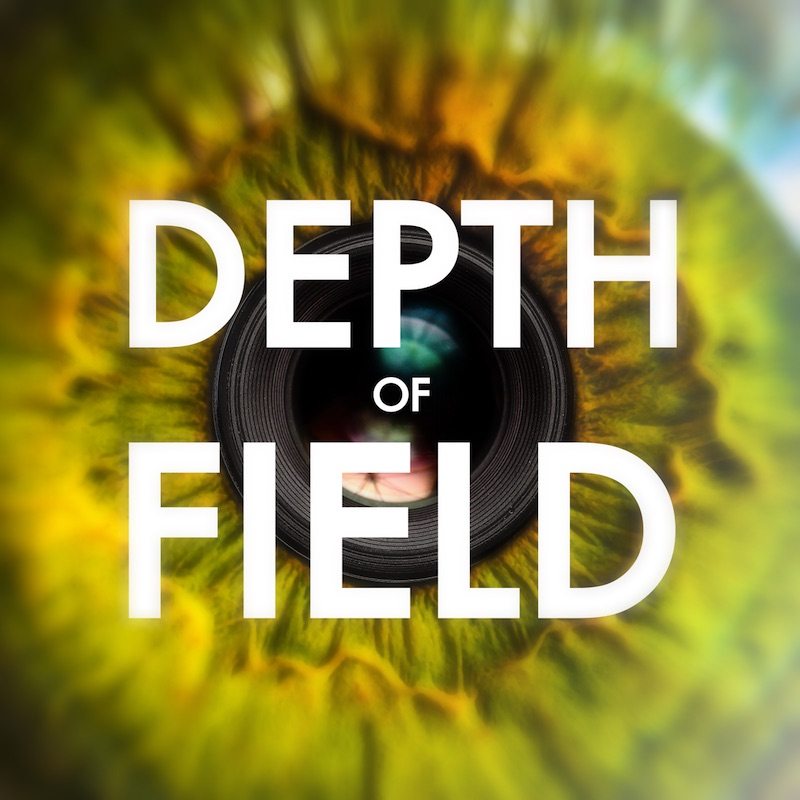


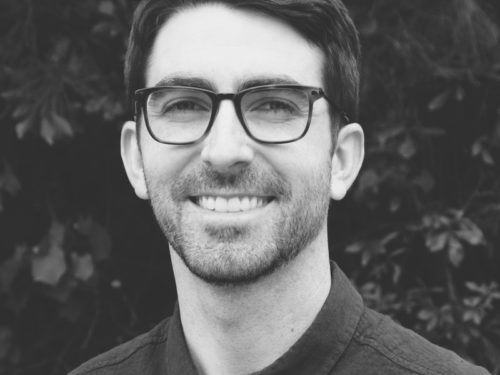
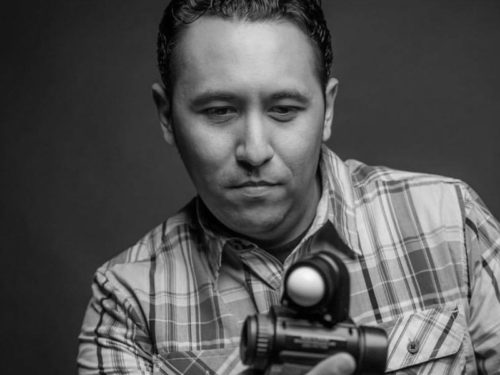
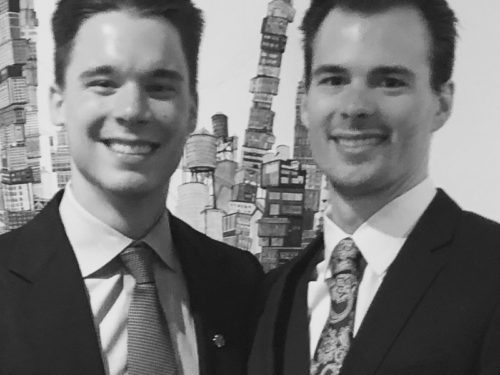
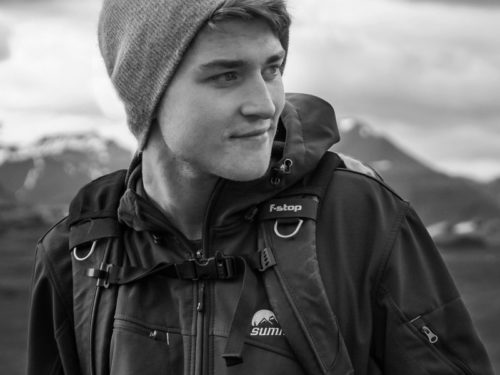
1 Comment
Awesome I so enjoyed listening to Jesse Boots Hes incredibly passionate about what he does